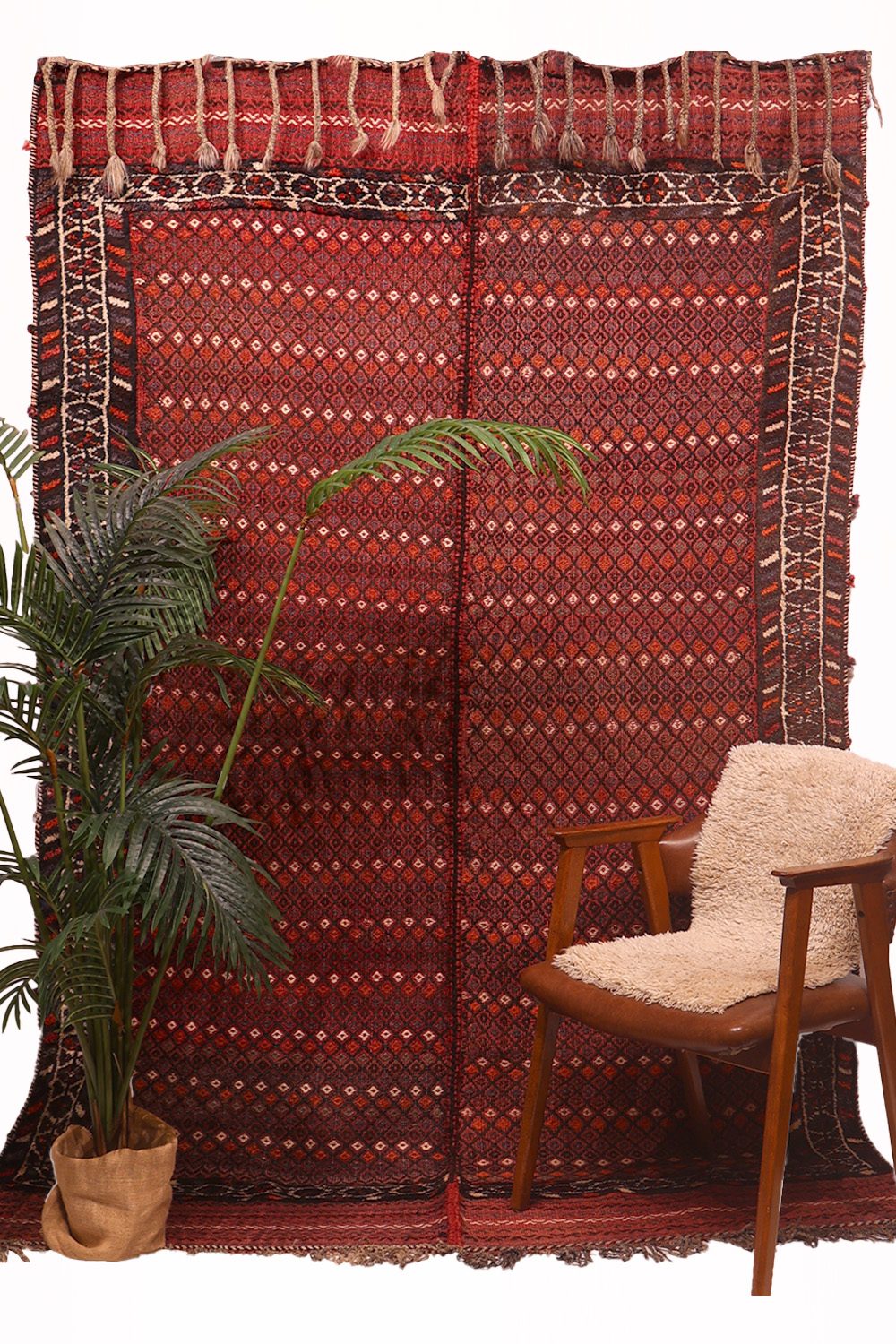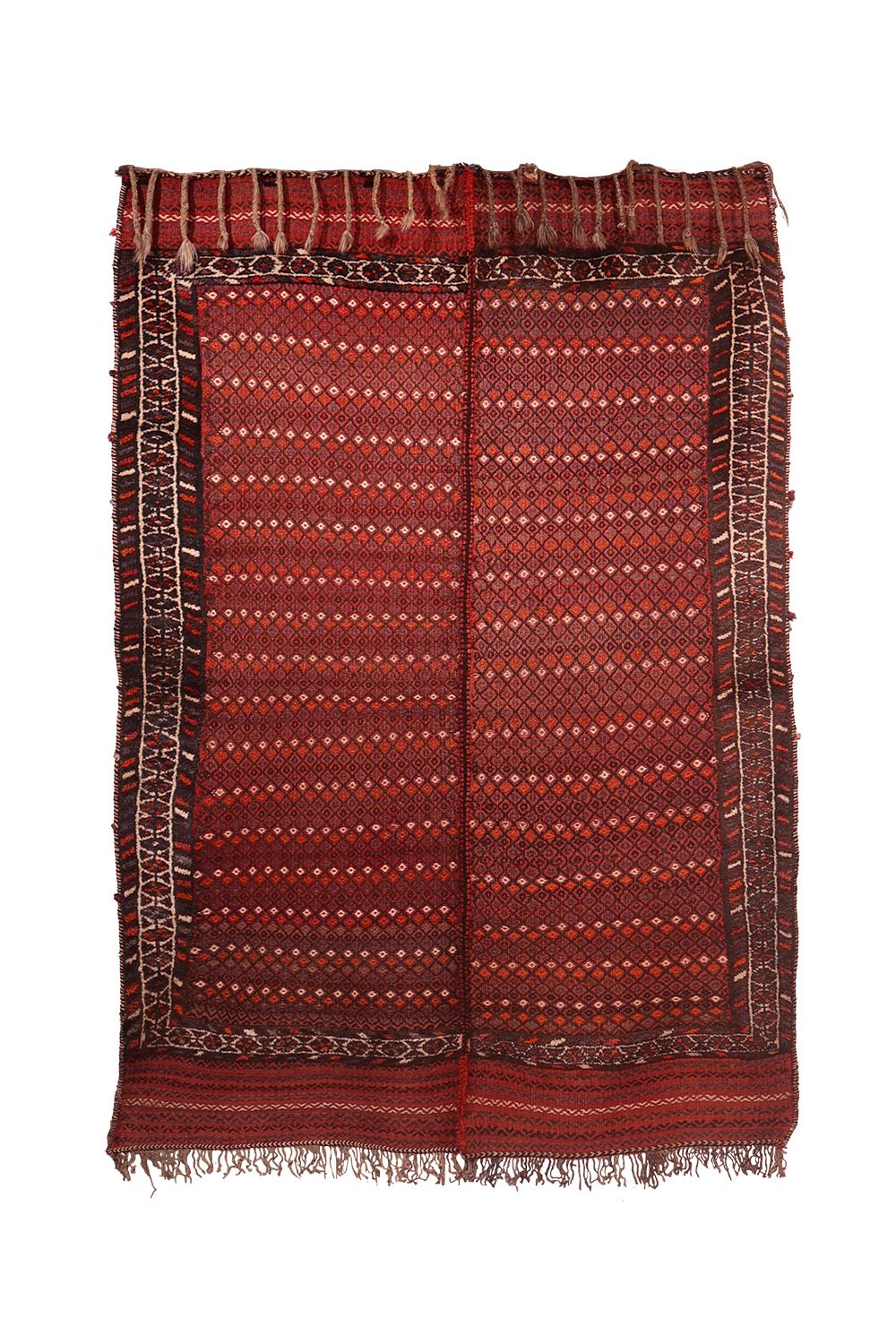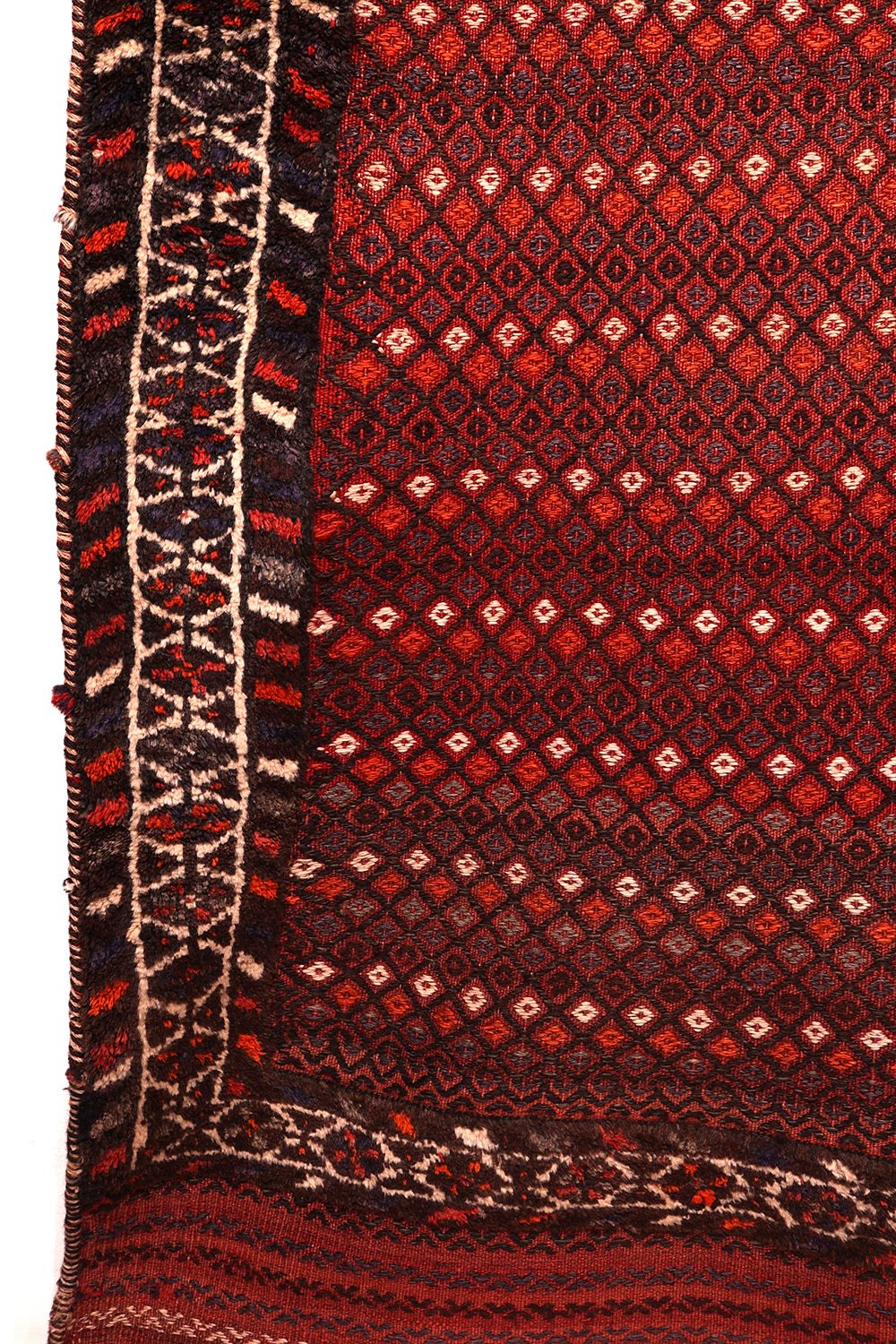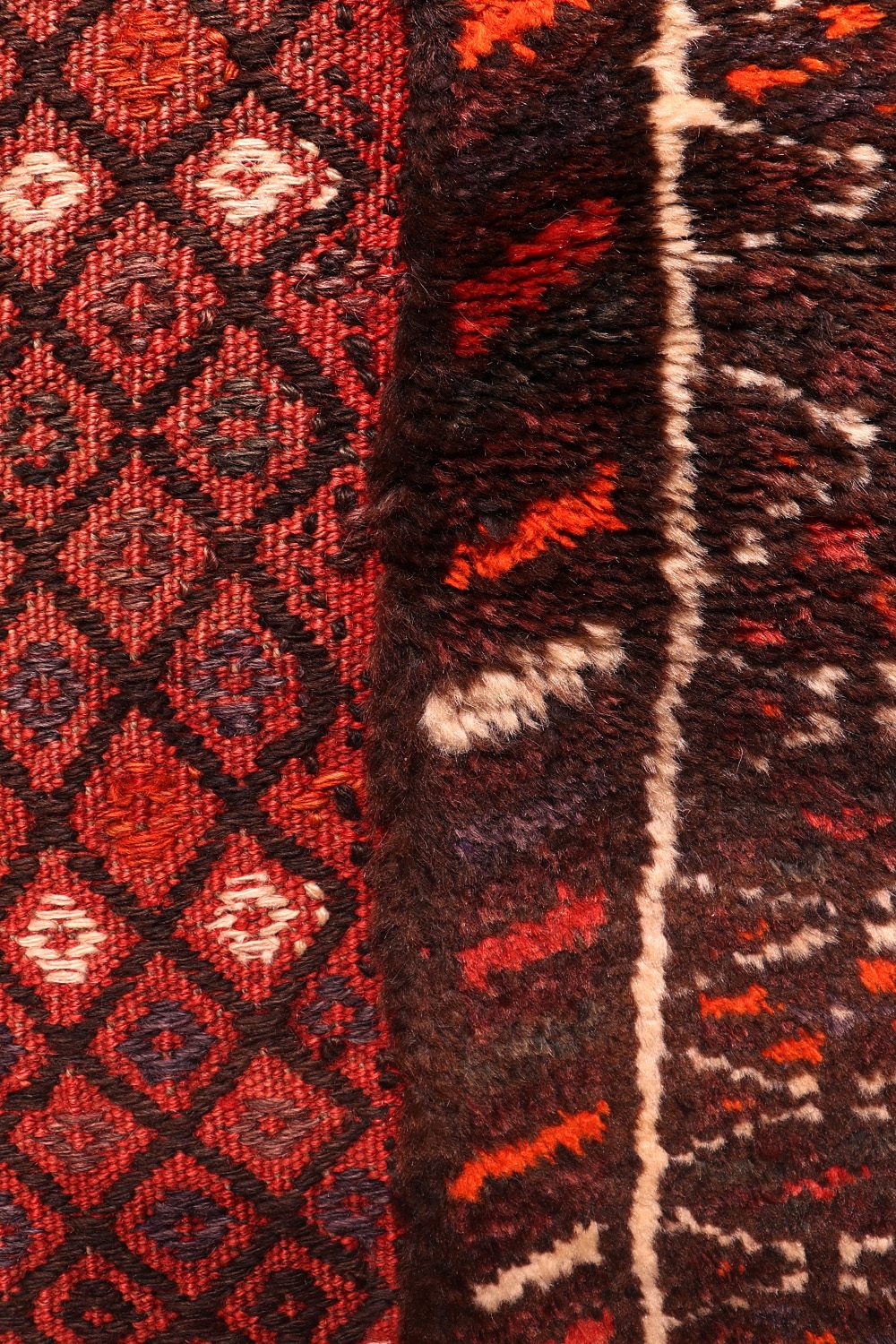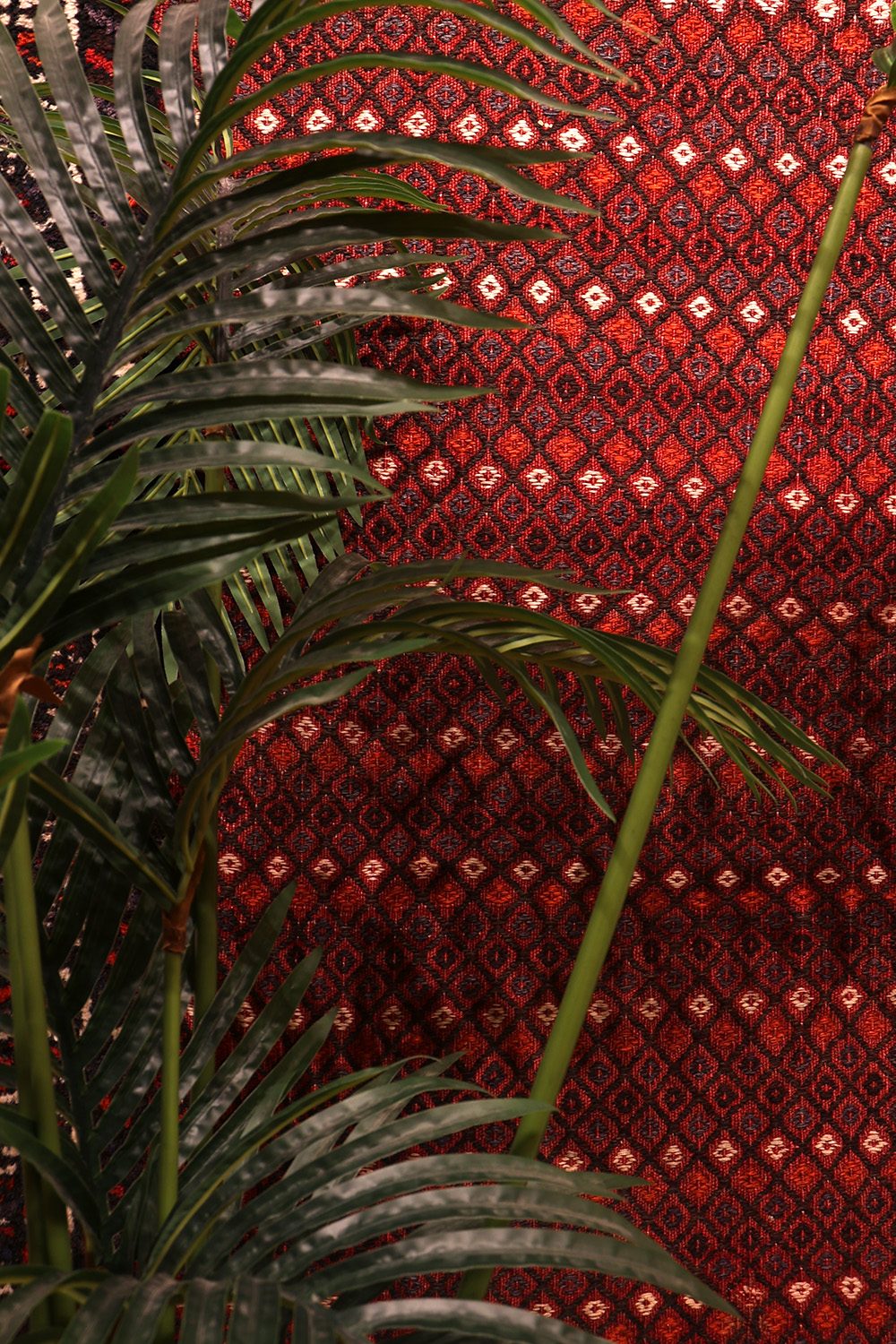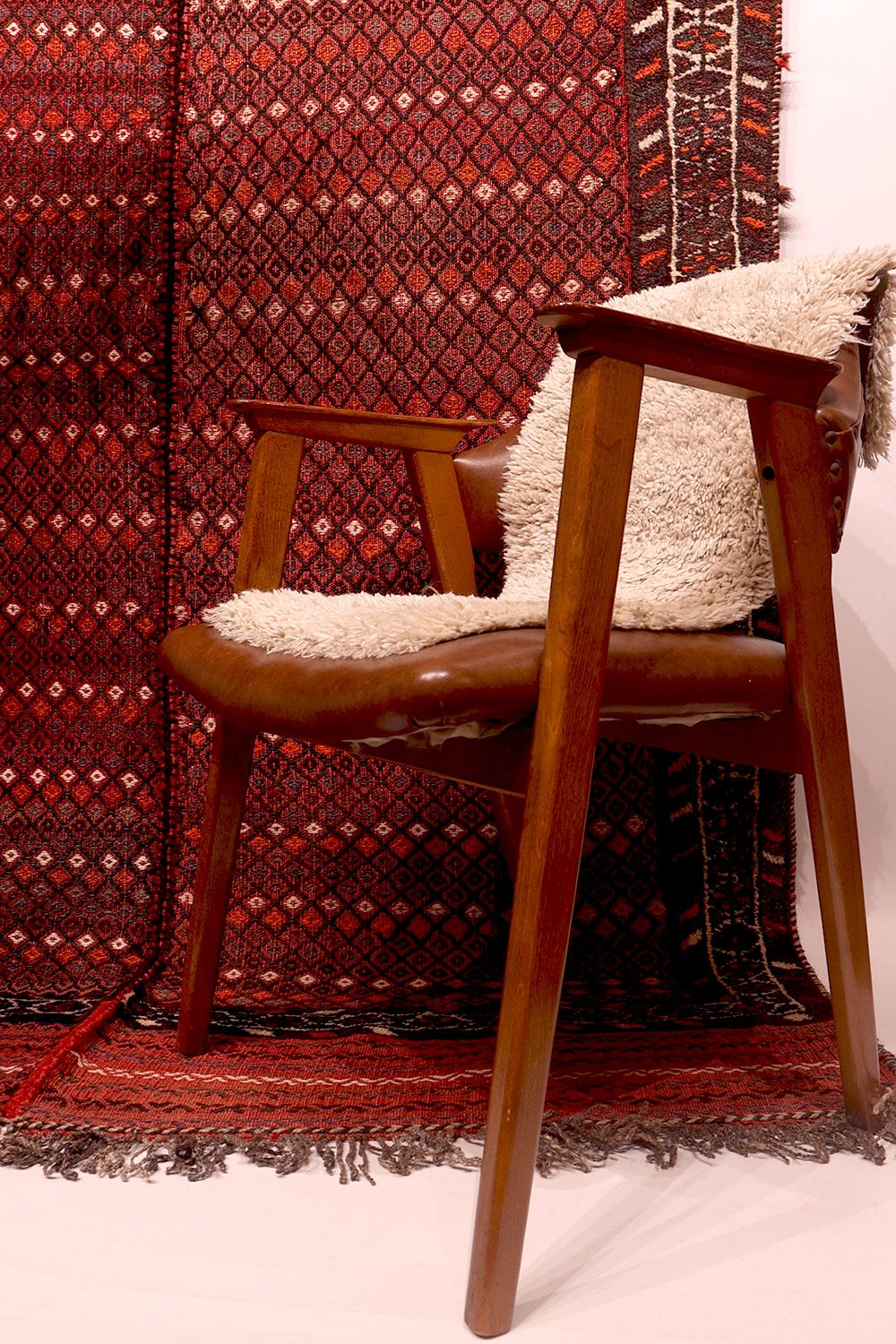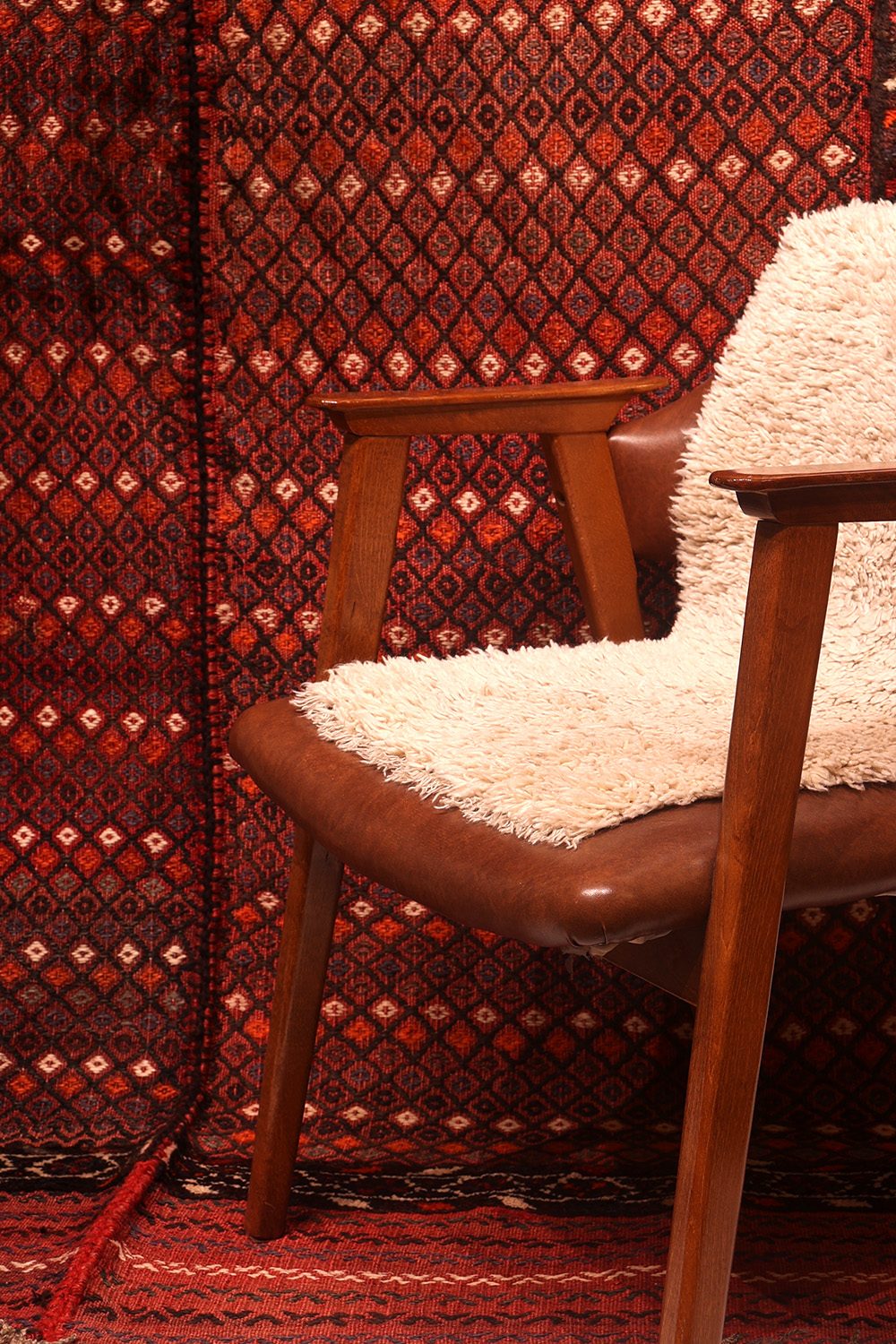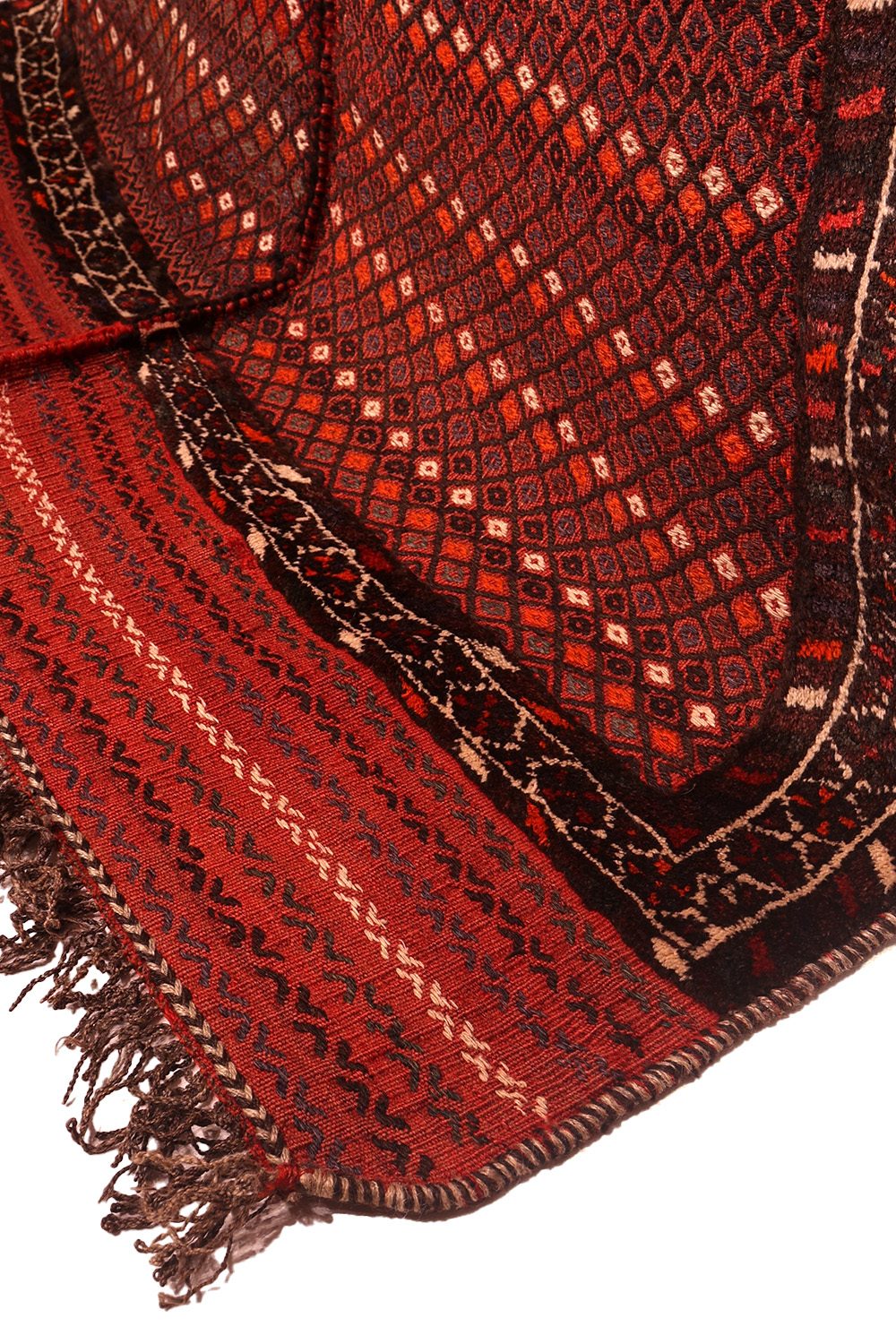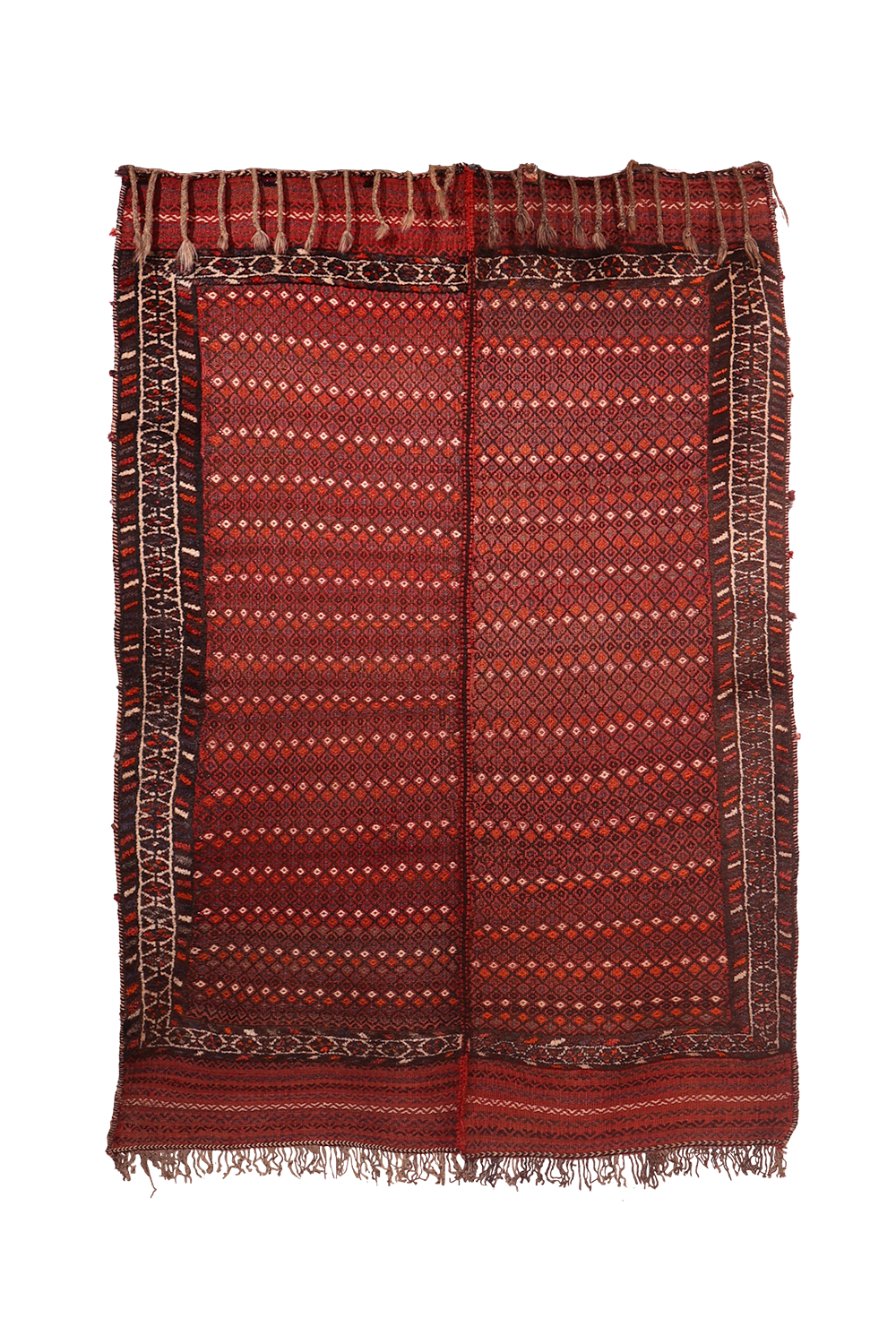A semi-antique Arabic shiraki kilim in a deep red colour that combines the flatweave (kilim) and the knotted techniques (pile areas). The weaver was probably a nomad and therefore she only had a small loom and therefore she wove the kilim in two pieces and joined them together in the middle. This is a sturdy and heavy kilim that will perform well in heavy traffic areas.
This type of kilim technique is called “shiraki” in southern Iran, which literally means “needle work”, although it is woven on a loom.
Material: 100% hand-spun sheep wool
Size: 240×150 cms
Origin: Arabic tribes, Iran
Date of weaving: 1960s
Kilims or Gilims are flatwoven textiles with a woollen weft on a woollen, goat hair or cotton warp. There are many different techniques and designs. The weaver normally works within a tradition of techniques, motifs and designs specific to a particular area or ethnic group. The designs relate to her natural surroundings, protection, fertility and the harmony of family relationships. Each weaver adds something from her own creativity and sense of composition. Kilims are often woven as part of a marriage dowry and can be used to create many different objects like storage bags, horse-blankets, baby carriers, blankets and wall and floor coverings.
This kilim was hand-woven on a simple loom by a village or nomadic weaver for her own use. Probably the weaver used wool from her own sheep. The wool was first cleaned, then hand-carded, hand-spun and finally dyed by hand, often using natural dye materials like roots, nuts, berries, fruits, flowers and plants. Kilims from the last quarter of the twentieth century mostly use synthetic dyes. This kilim would have taken many months to complete.
All our kilims selected in the country of origin and are professionally washed and restored before we import them directly from Iran, Turkey and Afghanistan. Natural patina and charming imperfections in design and colour (abrash) are highly valued characteristics of hand-woven kilims.
1 in stock
| Weight | 12 kg |
|---|
